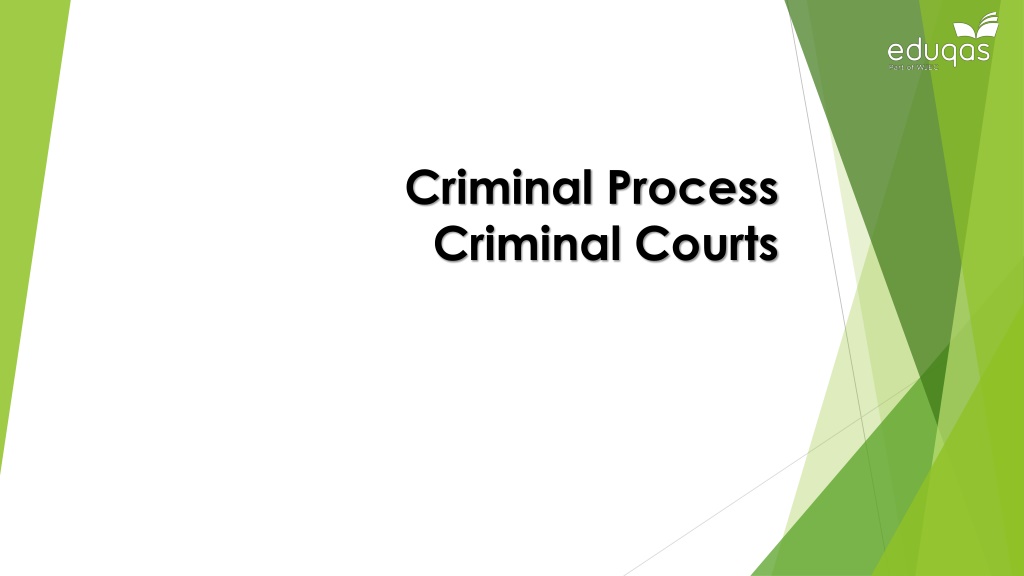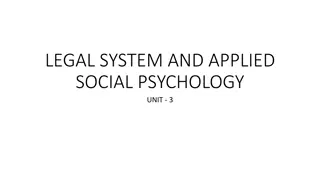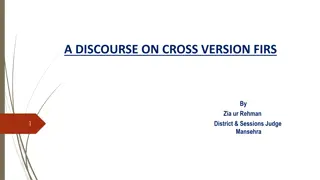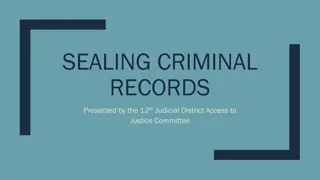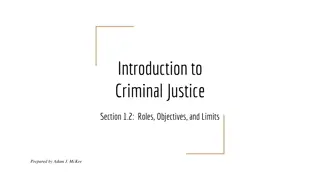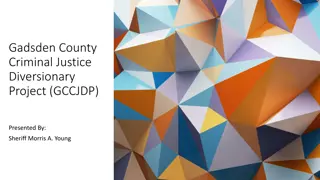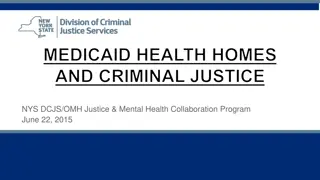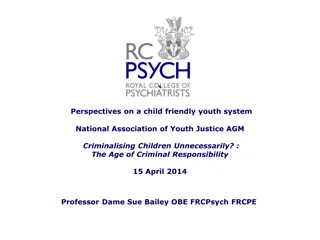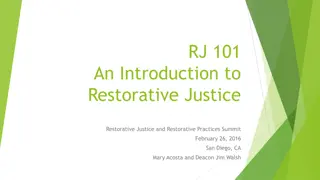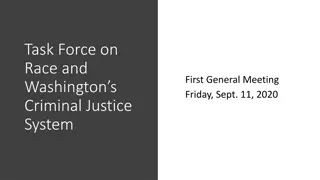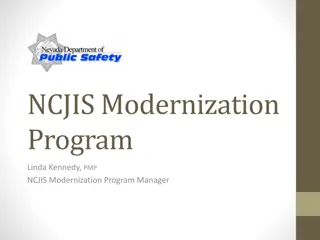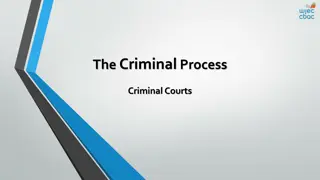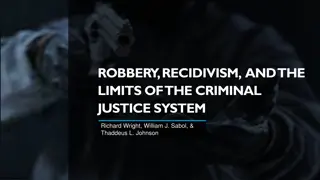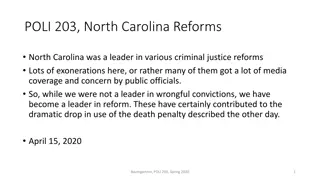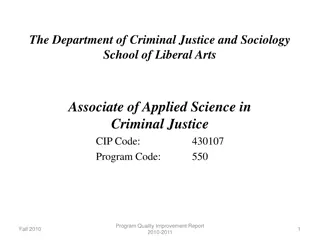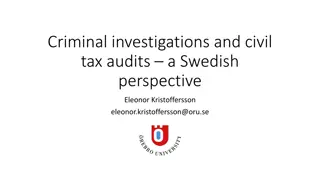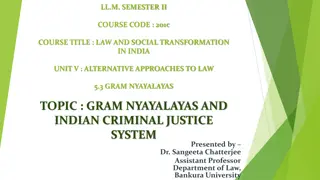Overview of the Criminal Justice System
Exploring the complexities of the criminal justice system, this content delves into the adversarial system, classification of offenses, criminal court system, modes of trial, plea bargaining, trial procedures, and various criminal process models.
Download Presentation

Please find below an Image/Link to download the presentation.
The content on the website is provided AS IS for your information and personal use only. It may not be sold, licensed, or shared on other websites without obtaining consent from the author. Download presentation by click this link. If you encounter any issues during the download, it is possible that the publisher has removed the file from their server.
E N D
Presentation Transcript
Criminal Process Criminal Courts
Objectives Explain what is meant by an adversarial system Explain how offences are classified Describe the criminal court system Explain mode of trial Explain sending for trial Explain plea and case management hearings Explain disclosure and plea bargaining Assess whether plea bargaining should be allowed Explain the trial process / procedure Evaluate the system
The Criminal Process Models of criminal justice systems Herbert Packer Crime control model Due process model
The Criminal Process Classification of Offences Summary Offences Offences triable either way Indictable Offences
The Criminal Court System European Court of Human Rights Privy Council Supreme Court Court of Appeal Leapfrog procedure High Court (Queen s Bench Division) Appeal by way of case stated Crown Court Magistrates Court
Mode of Trial Triable either way offences defendant can insist on jury trial, otherwise it is up to the Magistrates How do the magistrates make this decision? Seriousness of the case Their sentencing powers Since 1996 they must take into account the defendant s plea Criminal Justice Act 2003, Sched.3 magistrates will be told of defendant s prior convictions when deciding mode of trial.
Sending for Trial Section 51 Crime and Disorder Act 1998 sending for trial hearing (old committal procedures abolished by the Criminal Justice Act 2003) Sending for trial indictable offences : One appearance in Magistrates Court to determine e.g. funding of case, bail, use of exhibits and statements. 1. Magistrates provide statement of evidence, notice of the offence(s) and place of trial. 2. Then sent immediately to Crown Court. 3.
Plea & Case Management Hearings Criminal Procedure Rules 2005 introduced plea and case management hearings (replaced the old plea and directions hearings). Aim: to encourage early preparation of cases and reduce cracked trials : hearings held in open court, defendant present, enter a plea process known as the arraignment If guilty plea proceed to sentence If not guilty, prosecution and defence identify the key issues
Disclosure Criminal Justice Act 2003 & Criminal Procedure & Investigations Act 1996: Defence obliged to disclose all its evidence to the prosecution including defences they intend to rely on and points of law they will raise Defence must provide names and addresses of all witnesses including experts Prosecution continuing duty to disclose anything that might reasonably be capable of undermining the prosecution case or helps the defence case.
Plea Bargaining Negotiations between the prosecution and defence e.g. defendant agrees to plead guilty to a lesser charge: Pleas bargaining very common in US and now in the English system R v Turner (1970) judges not allowed to get involved in plea bargaining R v Goodyear (2005) defendant can request an indication from the judge as to likely sentence if they plead guilty Is plea bargaining in the interests of justice? What do you think?
The Trial Burden of proof prosecution beyond all reasonable doubt Prosecution presents first Defence then presents their case (unless submission of no case to answer is successful) Youth Justice & Criminal Evidence Act 1999 measures aimed at protecting vulnerable witnesses giving evidence Each side makes closing speech Crown Court judge sums up for the jury ss.101-103 Criminal Justice Act 2003 & R v Hanson (2005) evidence of bad character and previous convictions
The Criminal Process 1. Should evidence of bad character and previous convictions be admitted? 2. What are the arguments for and against the allowing of such evidence?
Criticism of the System Cracked and ineffective trials Problems with disclosure Criminal Procedure & Investigations Act 1996 Confession evidence and miscarriages of justice the need for a corroboration rule Role of expert witnesses R v Clark (2003) Treatment of victims and witnesses Role of the media contempt of court
Reforms Community Justice Centres Government paper: Delivering simple, speedy, summary justice(2006) next day justice
Test Yourself 1. What is meant by an adversarial system? 2. How are criminal offences classified? 3. What is meant by mode of trial? 4. What are the disclosure rules? 5. What is plea bargaining? 6. What is the burden of proof and who must prove it?
